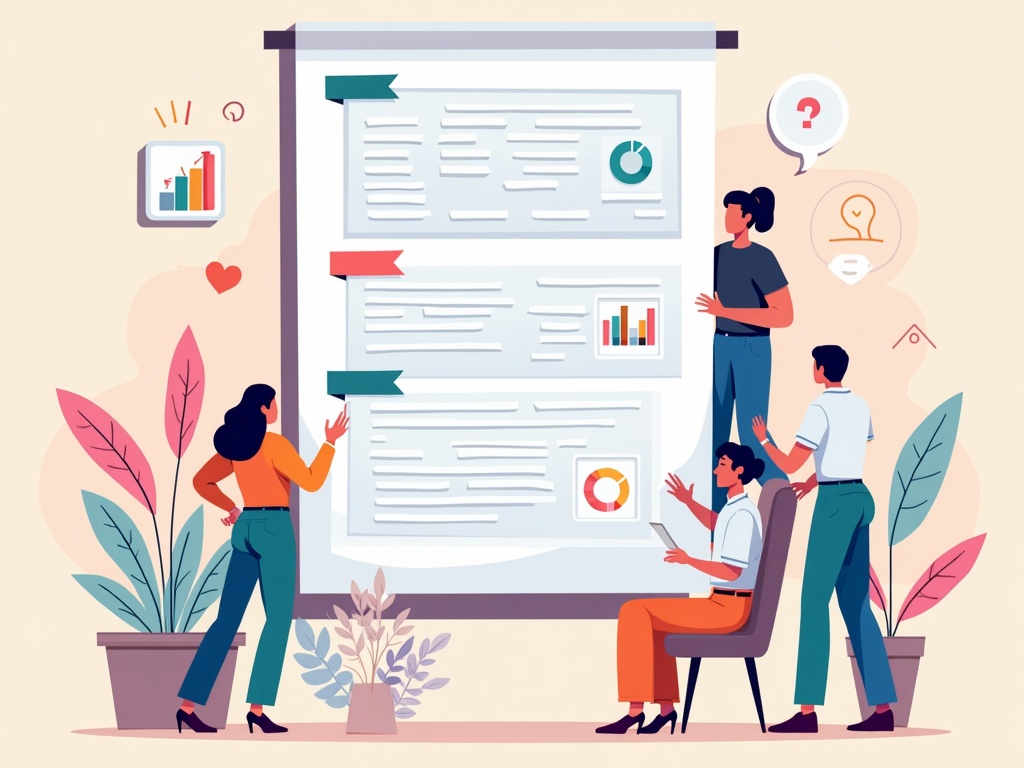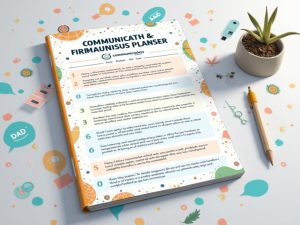Client Communication Plan Template: A Comprehensive Guide
Imagine your business as a ship, navigating the vast ocean of the market. Your clients are the precious cargo, and communication is the sturdy hull that keeps everything afloat. Without a well-defined communication plan, choppy waters can lead to misunderstandings, dissatisfaction, and ultimately, lost clients. This is why a client communication plan template isn't just a nice-to-have; it's the bedrock of successful client relationships.
Why You Need a Client Communication Plan Template
A client communication plan template provides a structured approach to managing interactions with your clients. It ensures consistency, clarity, and proactivity in your communication, leading to stronger relationships and increased client retention. Think of it as a roadmap, guiding you and your team through every stage of the client journey.
Benefits of a Well-Defined Communication Plan
**Improved Client Satisfaction:Consistent and clear communication demonstrates that you value your clients and are invested in their success. When clients feel heard and understood, their satisfaction levels soar.
**Reduced Misunderstandings:A proactive communication plan anticipates potential issues and addresses them before they escalate. This minimizes confusion and prevents costly mistakes.
**Increased Client Retention:Satisfied clients are more likely to stick around. A solid communication plan fosters loyalty and reduces churn, contributing to long-term business growth.
**Enhanced Brand Reputation:Positive client experiences translate into positive word-of-mouth referrals. A reputation for excellent communication can attract new clients and boost your brand image.
**Streamlined Internal Processes:A well-defined plan provides clarity for your team, ensuring everyone is on the same page regarding communication protocols and responsibilities.
**Proactive Problem Solving:Identify potential issues early by implementing feedback loops into your plan to stay ahead of the curve and address concerns before they become major setbacks.
Essential Elements of a Client Communication Plan Template
While the specific content of your client communication plan template will vary depending on your industry and business model, certain key elements are essential for its effectiveness. Here's a breakdown of what to include:
1. Defining Your Target Audience
Before you can communicate effectively, you need to understand who you're talking to. Segment your client base into distinct groups based on factors such as industry, company size, or specific needs.
**Example:You might have separate communication strategies for small businesses versus enterprise clients.
**Key Considerations:What are their pain points? What are their communication preferences? What are their goals?
2. Identifying Communication Objectives
What do you want to achieve with your client communication? Clearly defined objectives provide a framework for your plan and allow you to measure its success. Possible goals include:
**Building Trust and Rapport:Show genuine interest in your clients' success.
**Providing Timely Updates and Information:Keep clients informed about project progress and industry news.
**Soliciting Feedback and Addressing Concerns:Actively seek client input and respond promptly to any issues.
**Promoting New Products or Services:Introduce relevant offerings that can benefit your clients. A strong communication plan can lead to successful cross selling.
3. Choosing the Right Communication Channels
Not all communication channels are created equal. Select the channels that best suit your target audience and communication objectives.
**Email:Ideal for formal updates, newsletters, and detailed information sharing.
**Phone Calls:Suitable for urgent matters, personalized discussions, and building rapport.
**Video Conferencing:Excellent for presentations, demonstrations, and collaborative meetings.
**Project Management Software:Great for tracking progress, sharing documents, and facilitating team communication.
**Social Media:Useful for building brand awareness, sharing industry insights, and engaging with clients in a less formal setting.
**In-Person Meetings:Invaluable for building strong relationships, addressing complex issues, and fostering collaboration.
4. Establishing a Communication Schedule
Consistency is key to effective client communication. Develop a schedule that outlines when and how you will communicate with clients throughout the relationship.
**Onboarding:Welcome new clients and provide them with essential information about your services.
**Project Updates:Keep clients informed about the progress of their projects.
**Regular Check-ins:Schedule regular calls or meetings to touch base and address any concerns.
**Newsletters:Share industry insights, company updates, and valuable resources.
**Feedback Requests:Solicit feedback at key milestones to ensure client satisfaction.
5. Defining Roles and Responsibilities
Who is responsible for each aspect of client communication? Clearly define roles and responsibilities to ensure accountability and prevent communication gaps.
**Account Manager:The primary point of contact for the client.
**Project Manager:Responsible for communicating project updates and timelines.
**Customer Support:Handles client inquiries and resolves technical issues.
**Marketing Team:Creates and distributes marketing materials and newsletters.
6. Creating Templates and Standard Responses
Save time and maintain consistency by creating templates for common communication tasks. This includes email templates, proposal templates, and standard responses to frequently asked questions.
**Example:Develop a template for sending project updates, including key milestones, progress updates, and potential roadblocks.
**Benefits:Streamlines communication, ensures consistency, and reduces errors.
7. Establishing a Feedback Mechanism
Client feedback is crucial for improving your communication and overall service delivery. Implement a system for collecting and analyzing client feedback.
**Surveys:Use online surveys to gather quantitative and qualitative data.
**Feedback Forms:Provide clients with a simple way to submit feedback after each interaction.
**Regular Check-ins:Use check-in calls or meetings to solicit feedback directly.
**Online Reviews:Monitor online reviews and respond to comments and concerns.
8. Measuring and Tracking Results
How will you know if your client communication plan is effective? Establish key performance indicators (KPIs) and track your progress over time.
**Client Satisfaction Scores:Measure client satisfaction using surveys or feedback forms.
**Client Retention Rates:Track the percentage of clients who renew their contracts or continue using your services.
**Net Promoter Score (NPS):Measure client loyalty by asking them how likely they are to recommend your company to others.
**Email Open and Click-Through Rates:Track the performance of your email marketing campaigns.
**Website Traffic and Engagement:Monitor website traffic and engagement metrics to see how your communication efforts are driving traffic and engagement.

Building Your Client Communication Plan Template: A Step-by-Step Guide
Now that you understand the essential elements of a client communication plan template, let's walk through the process of creating one for your business.
Step 1: Download a Template (or Create Your Own)
Start by downloading a pre-built template online or creating your own from scratch. Many free and paid templates are available online. Choose one that aligns with your business needs and industry. Alternatively, create your template using a word processor or spreadsheet program.
Step 2: Customize the Template
Tailor the template to your specific business requirements. Add your company logo, adjust the formatting, and modify the content to reflect your brand voice and communication style.
Step 3: Define Your Target Audience Segments
Identify your key client segments and develop specific communication strategies for each group. Consider factors such as industry, company size, and communication preferences.
Step 4: Outline Your Communication Objectives
What do you want to achieve with your client communication? Define specific, measurable, achievable, relevant, and time-bound (SMART) objectives.
Step 5: Select Your Communication Channels
Choose the channels that best suit your target audience and communication objectives. Consider factors such as reach, cost, and effectiveness.
Step 6: Develop a Communication Schedule
Create a schedule that outlines when and how you will communicate with clients throughout the relationship. Include onboarding, project updates, regular check-ins, newsletters, and feedback requests.
Step 7: Assign Roles and Responsibilities
Clearly define who is responsible for each aspect of client communication. Assign roles to specific team members and ensure they understand their responsibilities.
Step 8: Create Templates and Standard Responses
Develop templates for common communication tasks, such as email templates, proposal templates, and standard responses to frequently asked questions.
Step 9: Implement a Feedback Mechanism
Establish a system for collecting and analyzing client feedback. Use surveys, feedback forms, regular check-ins, and online reviews.
Step 10: Define Your KPIs and Tracking Methods
Establish key performance indicators (KPIs) and track your progress over time. Use data to measure the effectiveness of your communication plan and make adjustments as needed.
Tips for Effective Client Communication
Creating a client communication plan template is just the first step. To ensure your communication is truly effective, keep these tips in mind:
**Be Proactive:Don't wait for clients to reach out to you. Take the initiative to provide regular updates and address potential concerns before they escalate.
**Be Responsive:Respond promptly to client inquiries and requests. Even if you don't have all the answers immediately, acknowledge their message and let them know you're working on it.
**Be Clear and Concise:Use simple, easy-to-understand language. Avoid jargon and technical terms that clients may not be familiar with.
**Be Empathetic:Show genuine interest in your clients' needs and concerns. Listen actively and try to understand their perspective.
**Be Honest and Transparent:Be upfront about challenges and setbacks. Don't try to hide problems or make excuses.
**Be Consistent:Maintain a consistent brand voice and communication style across all channels.
**Personalize Your Communication:Tailor your messages to each client's specific needs and interests.
**Use Visual Aids:Incorporate images, videos, and other visual aids to enhance your communication.
**Proofread Carefully:Always proofread your messages before sending them to clients. Errors can damage your credibility.
**Seek Feedback Regularly:Ask clients for feedback on your communication and make adjustments as needed.
Leveraging Technology to Enhance Client Communication
In today's digital age, technology plays a crucial role in facilitating client communication. Here are some tools and platforms that can help you streamline your communication efforts:
**Customer Relationship Management (CRM) Systems:CRM systems like Salesforce, HubSpot, and Zoho CRM can help you manage client interactions, track communication history, and automate tasks.
**Project Management Software:Tools like Asana, Trello, and Monday.com can help you manage projects, share documents, and facilitate team communication.
**Email Marketing Platforms:Platforms like Mailchimp and Constant Contact can help you create and send email newsletters and marketing campaigns.
**Video Conferencing Tools:Tools like Zoom, Google Meet, and Microsoft Teams can help you conduct virtual meetings and presentations.
**Collaboration Tools:Tools like Slack and Microsoft Teams can help you facilitate internal team communication and collaboration.
**Survey Tools:Platforms like SurveyMonkey and Google Forms can help you create and distribute online surveys.
Common Mistakes to Avoid
Even with a well-defined communication plan, it's easy to make mistakes. Here are some common pitfalls to avoid:
**Lack of a Defined Strategy:Failing to develop a clear communication strategy can lead to inconsistent and ineffective communication.
**Ignoring Client Preferences:Not considering client communication preferences can result in messages being ignored or missed.
**Using Jargon or Technical Terms:Using language that clients don't understand can create confusion and frustration.
**Failing to Respond Promptly:Ignoring or delaying responses to client inquiries can damage your credibility and erode trust.
**Not Seeking Feedback:Failing to solicit feedback from clients can prevent you from identifying areas for improvement.
**Over-Communicating:Bombarding clients with too many messages can be overwhelming and annoying.
**Under-Communicating:Not providing enough information or updates can leave clients feeling uninformed and neglected.
A client communication plan template is a powerful tool for building stronger client relationships, improving satisfaction, and driving business growth. By following the steps outlined in this guide and avoiding common mistakes, you can create a communication plan that sets you apart from the competition. Make a plan, work the plan, and watch as your client relationships – and your bottom line – flourish. And be sure to revisit your plan periodically, because as your business evolves, your communications may need to as well. Good luck!
